Table of contents
Use in the kitchen
What is cocoa butter? The starting point for the production of cocoa butter is cocoa beans. In its natural state, the pale yellow to whitish vegetable fat has a mild but unmistakable cocoa flavor. The smell is faint but still pleasantly cocoa-like. Cocoa butter treated with steam (deodorized) is odorless and tasteless. 8 Cocoa butter is in a brittle, solid form at room temperature. It melts at body temperature, which is why products containing cocoa butter melt in the mouth.
Cocoa butter is primarily used to make various chocolate products, e.g. milk chocolate, white chocolate or melting chocolate, pralines, dark nougat, couverture, spreads, cakes, pies, biscuits and muffins. It is responsible for the typical chocolatey aroma, but also for the creaminess and melting. Cocoa butter is also often used for vegan dessert creations and ice creams. Fruit smoothies can be refined with natural cocoa butter to give them a light cocoa note.
One advantage of steaming and lightly frying is that you only need a very small amount of cocoa butter. Tofu gently fried in cocoa butter with vegetables is one possible way of preparing it. Because of the high calorie content 1 and the unhealthy fat components 14, we recommend consumption in moderation.
Since cocoa butter is purely plant-based and therefore vegan, it can also be used as a butter substitute for vegan dishes. Cocoa butter is not particularly suitable as a spread due to its hard consistency at room temperature. Alternatively, you can make vegetable margarine with just a few ingredients.
Is cocoa butter raw? Cocoa butter is only suitable for a raw food diet if the starting product (fermentation and drying of the raw cocoa bean, without roasting) and the production process (grinding and pressing) meet the criteria for raw food quality. However, checking raw food products is difficult because there is no recognized raw food label (seal).
Vegan recipe for amaranth chocolate bars with cocoa butter
Ingredients (for 8 people): 200 g cocoa butter (organic), 160 g amaranth (puffed), 120 g macadamia nut puree, 50 g agave syrup (or less), 80 g cranberries (dried), 60 g hazelnuts (chopped), 50 g figs (dried), 30 g cocoa powder (unsweetened), 1½ tspvanilla powder, 1½ tsp cinnamon powder, 1 pinch of salt.
Preparation: Gently heat the cocoa butter in a water bath until it is liquid. Put all the remaining ingredients in a bowl and pour the melted cocoa butter over it. Mix everything together well. Spread the mixture onto a baking tray lined with baking paper - you want a smooth, not too thick surface. Place the baking tray in the fridge for around 30 minutes until the mixture is solid. Cut the mixture into thin bars. The vegan bars make a good quick energy snack between meals and, depending on how the cocoa butter is made, are raw food quality.
Vegan recipes with cocoa butter can be found under the note: " Recipes that have the most of this ingredient ".
| Not only vegans or vegetarians should read this: Vegans often eat unhealthily. Avoidable nutritional errors. |
Purchasing - Storage
Cocoa butter (cocoa butter) is available in well-stocked supermarkets such as Coop, Migros, Rewe or Edeka. In other supermarkets (e.g. Denner, Volg, Spar, Aldi, Lidl, Billa, Hofer) cocoa butter is not available for purchase regularly, at most during special weeks. Organic supermarkets (e.g. Alnatura, Denn's Biomarkt) sell the vegetable fat in organic quality (bio). Delicatessens, online shops, drugstores and pharmacies also sell cocoa butter. You can find it in jars, in bowls, as fragments, powdered or in bags packaged as flakes, chips or drops.
The availability of cocoa butter varies depending on the size of the store, catchment area, etc. You can find our recorded food prices for the DA-CH countries above under the ingredient image - and by clicking you can see their development at different suppliers.
Storage tips
The high proportion of saturated fatty acids compared to the small amount of unsaturated fatty acids means that the cocoa butter has a long shelf life - provided that you store it correctly. How should you store cocoa butter? Cocoa butter should be stored airtight in a cool, dark place that is protected from light. How long does cocoa butter last? It has a shelf life of around two years. If you want to use it for longer, you should smell it before using it. As long as cocoa butter still has its typical scent and does not smell rancid, it is safe to eat.
Ingredients - Nutritional values - Calories
The energy content of cocoa butter is very high at 884 kcal/100g. 100 g of cocoa butter consists of 100 g of fat, of which 60% are saturated fatty acids - comparable to palm oil (49%). Coconut oil/coconut fat clearly exceeds these values with 82% saturated fats. Rapeseed oil, on the other hand, has a much better ratio with only 7.4% saturated fats. 1
The saturated fatty acids predominantly contained in cocoa butter are composed of palmitic acid (16:0) and stearic acid (18:0), among others; unsaturated fatty acids such as oleic acid and linoleic acid are also present. 1 In the case of unsaturated fatty acids, an unfavorable ratio between omega-6 and omega-3 fatty acids is also found (28:1).
Furthermore, cocoa butter contains 25 µg of vitamin K per 100 g (33% of the daily requirement). Agave syrup (22 µg/100g) and soy cream with rapeseed oil (24 µg/100g) have similar amounts. In comparison, cold-pressed rapeseed oil has significantly more vitamin K at 71 µg/100g. Swiss chard, as an unprocessed product, contains many times more of this vitamin at 830 µg/100g. 1
100 g of cocoa butter also contains 1.8 mg of vitamin E (15% of the daily requirement), which is comparable to hazelnut milk (1.8 mg/100g) and sesame oil (1.4 mg/100g). Hazelnut oil contains a large amount of vitamin E at 47 mg/100g. 1
The complete ingredients of cocoa butter, the coverage of the daily requirement and comparison values with other ingredients can be found in our nutrient tables. In the article Nutrients explained you will get a detailed insight into the topic.
Health effects
Is cocoa butter healthy? According to a study, cocoa butter contains significant amounts of vitamin D2. The reason for this is that cocoa beans are susceptible to fungal infections. Fungi have a high ergosterol concentration, so contaminated beans often contain large amounts of ergosterol. This is a precursor to vitamin D2. After fermentation, the cocoa beans are often dried in sunlight, which may lead to the conversion of ergosterol into vitamin D2. 2 The vitamin D2 content varies greatly depending on the food. However, due to the high fat and sugar content, there is hardly any recommendation to meet the daily requirement of this vitamin through chocolate 10 or products containing cocoa butter. The same applies to vitamin K.
Further adverse effects can be found in the chapter "Danger - Intolerances - Side Effects".
Secondary plant substances
Many of the health effects of cocoa butter - as with other cocoa products (e.g. cocoa beans, fermented and cocoa powder) - can be attributed to the secondary plant substances it contains. Our article on secondary plant substances provides an overview of the classification of substance groups, their occurrence in foods and possible effects on humans.
Cocoa butter contains, among others, the following secondary plant substances: 15
- Isoprenoids: Terpenes: Triterpenoids: Steroids (Phytosterols:Beta-Sitosterol, Campesterol and Stigmasterol)
- Alkaloids: theobromine and caffeine
- Polyphenols: flavonoids
However, even after extensive research, we were unable to find any specific information about the exact composition of the cocoa butter ingredients. It should also be noted that the composition of the secondary plant substances can vary depending on the variety, time of harvest and growing conditions of the processed cocoa beans. Therefore, quantities are only of limited use and should only be understood roughly.
Dangers - Intolerances - Side effects
Cocoa butter should only be consumed in small quantities. If consumed in excess, the high calorie and fat content can promote the development of overweight and obesity - which is further supported by the high saturated fatty acids and the unfavorable LA-ALA ratio.
If you replace saturated fat with healthier fats, you reduce the risk of suffering from cardiovascular disease. This is how Prof. Dr. Rachel K. Johnson (nutritionist at the University of Vermont) sums it up. 14 Read more about this topic in our article on coconut oil under the point health effects.
Folk medicine - natural healing
Cocoa butter has long been used as a base for suppositories and is contained in some ointments. 3
Ecological footprint - animal welfare
Different methods have been established for the cultivation of cocoa trees for commercial use. The trees usually grow in monocultures, for which existing forests are often cleared to create enough space. Alternatively, there is agroforestry, in which cocoa trees grow in a system of other plants. This means they are not directly exposed to the sun and therefore require less water. Compared to monocultures, there is more potential for biodiversity here. 6
The ecological footprint in terms of the amount of CO2 emitted for the production of cocoa butter depends on the type of cultivation (organic or conventional cultivation), but also on the management (monoculture or agroforestry). Organic agroforestry produces the smallest amounts of CO2 emissions compared to conventional agroforestry or the cultivation of cocoa trees in monocultures. 11 Overall, however, the ecological footprint is high, mainly due to the long transport routes from Africa or South America and the many production steps. 6 Another factor to consider is the carbon released during slash-and-burn for monocultures, which the trees have stored. This further increases the ecological footprint. 12 It is difficult to understand under which type of cultivation the cocoa trees are grown for the production of cocoa products. However, you can look for the Rainforest Alliance certified seal. Companies with this certification are encouraged to plant more native trees on their land and promote local agroforestry. Child labor can also be excluded through this seal (or through Fairtrade). 13
Cocoa butter has a poor water footprint: around 34,000 litres of water are needed to produce 1 kg of cocoa butter. In comparison, 1 kg of coffee requires 18,900 litres of water and 1 kg of beef requires 15,400 litres of water. 5
For detailed explanations of various sustainability indicators (such as ecological footprint, CO2 footprint, water footprint), see our article: What does the ecological footprint mean?
When buying cocoa products, you should prefer sustainable products wherever possible. Organic logos indicate environmentally friendly cultivation (pesticide-free) and careful production, while fair trade seals indicate that the product is produced under fair conditions and without child labor. Organic methods also do not involve gassing during transport or alkalizing the cocoa mass (additives such as sodium carbonate, potassium carbonate and magnesium oxide, tartaric acid and citric acid are required - without labeling requirements). 8
Animal protection - species protection
The deforestation of rainforests for cocoa cultivation deprives many animals, such as monkeys, of their habitat. Ivory Coast is the world's leading cocoa producer and has expanded its cocoa agro-industry enormously between 1961 and 2000. A large area of the jungle was sacrificed for this expansion. This resulted in a worrying decline in many primate populations. 7
Worldwide occurrence - cultivation
The cocoa tree ( Theobroma cacao) comes from South and Central America (see cocoa bean). The plant is cultivated in many tropical regions, with the majority of plantations located in the tropical rainforests of West Africa. The largest producers are Côte d'Ivoire, Ghana and Indonesia. 3,4
Industrial production
How is cocoa butter made? Cocoa butter is made from fermented, cleaned cocoa beans that have been separated from their shells. These are often roasted (at 130 °C). The beans are ground in cocoa mills to form a sticky cocoa mass. There is often an intermediate step, alkalization (Dutching / Dutch Process), in which the mass or the broken pieces are treated with alkali salts to make it easier to separate the cocoa mass and fat. The mass is put into a fat press, where the fat is separated from the remaining components. The press residue produces cocoa powder (often simply called cocoa), and the fat is the desired cocoa butter. The cocoa butter is usually cleaned with steam (deodorization). This removes undesirable contaminants from the fat and makes it tasteless. 8 This cocoa butter is called 'refined'.
To obtain raw cocoa butter, not only must the starting product, the cocoa bean, be unroasted, but the temperatures during cocoa fermentation and drying must also be carefully monitored. The temperature limits for raw food are not entirely clear and are not the same everywhere: for example, in Europe the limit is 42 °C, while in the USA in many places anything below 45-47 °C is considered raw. However, temperatures above 50 °C are not unusual during fermentation and when drying the cocoa beans in the sun, and controls are difficult here.
Further information
There is actually no clear melting point for cocoa butter. Rather, cocoa butter has a melting range that lies between 27 and 35 °C. This can be explained by cocoa butter polymorphism: cocoa butter is a polymorphic fat and can crystallize in different crystal forms, all of which have a different melting point. This ability comes from the triglycerides it contains. Cocoa butter usually has several crystal forms, which leads to a melting range. 9
Is there a cocoa butter substitute? For technological and economic reasons, there are cocoa butter equivalents (CBE), i.e. substitutes for cocoa butter. These vegetable fats are very similar to cocoa butter in their composition and properties. They can be used to replace cocoa butter or mixed in any ratio. Palm oil and shea butter are common equivalents, but olive oil orsunflower oil are also used. 8 Such cocoa butter imitations must be labelled in Europe.
Alternative names
Cocoa butter can also be called cocoa fat or cocoa oil. Incorrect spellings such as cocoa butter, cocoa butter etc. creep in. The drug name for cocoa butter in Latin is Cacao oleum (formerly Oleum cacao). You can also find Adeps cacao, Theobromatis oleum or Butyrum cacao (Butyrum de Cacao).
In English it is called cocoa butter, theobroma oil or theobroma cacao butter.
Other uses
Cocoa butter is used in all kinds of cosmetic and care products, such as lip balms, creams and lotions, due to its moisturising and protective properties. It is particularly suitable for dry, cracked skin and unruly hair. But be careful: it should not be used on oily skin or skin prone to acne, as it weighs the skin down and could clog pores. It is also used as an ingredient in soaps. It gives soaps a pleasant consistency and a creamy lather. Cocoa butter is also said to reduce wrinkles and stretch marks. However, this effect has not been scientifically proven.
According to popular claims, cocoa butter can be used as a repellent against insect bites. The smell of cocoa butter rubbed onto the skin is said to deter insects from biting. However, we could not find any studies that confirm this.
Bibliography - 15 Sources (Link to the evidence)
| 1. | USDA United States Department of Agriculture. |
| 2. | Kühn J, Schröter A, Hartmann BM, Stangl GI. Cocoa and chocolate are sources of vitamin D2. Food Chem. 15 December 2018;269:318–320. |
| 3. | Pahlow M. Das grosse Buch der Heilpflanzen. Gesund durch die Heilkräfte der Natur. Nikol Verlagsges. mbH: Hamburg; 2013: 451. |
| 4. | Pini U. Das Bio-Food Handbuch. Ullmann Verlag: Potsdam; 2014: 361-362. |
| 5. | Efanews.eu World Water Day: chocolate, cocoa and coffee at the top of footprint. 2021. |
| 6. | Blog.wwf.de Schokolade und Umwelt: die dunkle Seite. 2020. |
| 7. | Bitty EA, Bi SG, Bene J-CK, Kouassi PK, McGraw WS. Cocoa farming and primate extirpation inside cote d’ivoire’s protected areas. Tropical Conservation Science. 2015;8(1):95–113. |
| 8. | Chemie-in-lebensmitteln.katalyse.de Gewinnung von Kakaopulver und Kakaobutter. |
| 9. | Reposit.haw-hamburg.de Worin unterscheiden sich Kakaobuttersorten und inwiefern wirken sich diese Eigenschaften auf das Kristallisationsverhalten aus? 2021. |
| 10. | Martin-Luther-Universität Halle-Wittenberg. Kakao: Eine leckere Quelle für Vitamin D? Pressemitteilung 119/2018. |
| 11. | Pérez-Neira D, Copena D, Armengot L, Simón X. Transportation can cancel out the ecological advantages of producing organic cacao: The carbon footprint of the globalized agrifood system of ecuadorian chocolate. Journal of Environmental Management. 15 December 2020;276:111306. |
| 12. | Melillo JM, Houghton RA, Kicklighter DW, McGuire AD. Tropical Deforestation and the global carbon budget. Annu. Rev. Energy Environ. 1996;21:293-310. |
| 13. | Rainforest Alliance. Rainforest Alliance-zertifizierter Kakao. 2022. |
| 14. | Johnson RK. Front-of-pack labelling - healthier diets and better health or confused consumers? Nutrition Bulletin. 14 August 2014;39(3):235–237. |
| 15. | Roiaini M, Seyed H M, Jinap S, Norhayati H. Effect of extraction methods on yield, oxidative value, phytosterols and antioxidant content of cocoa butter. International Food Research Journal. 2016;23(1):47-54. |

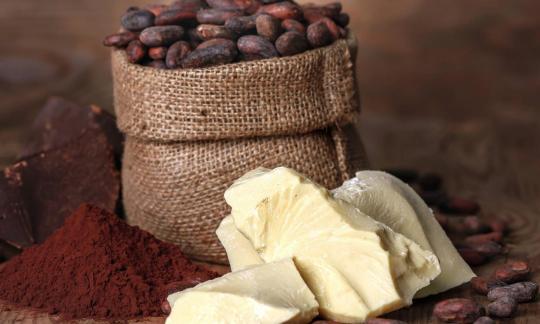

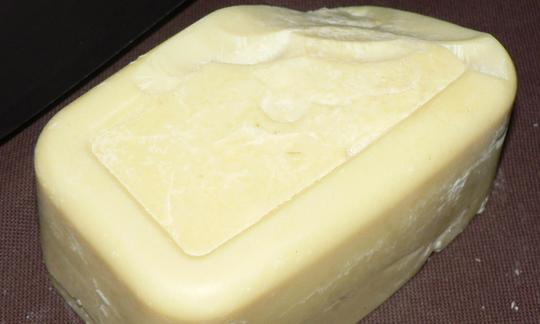

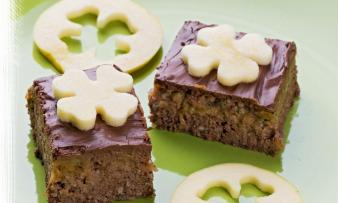
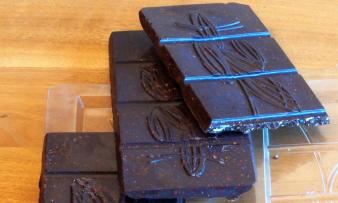
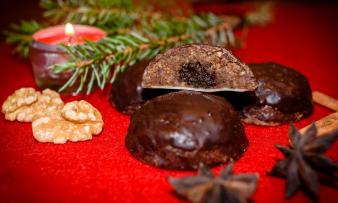





Comments